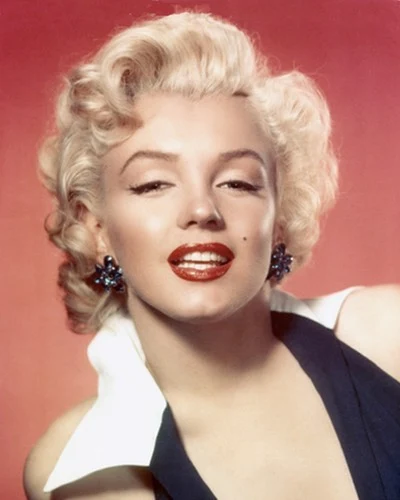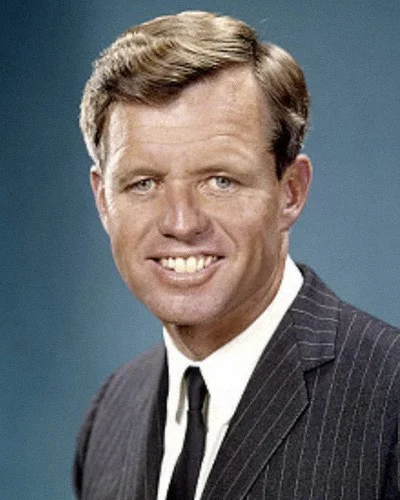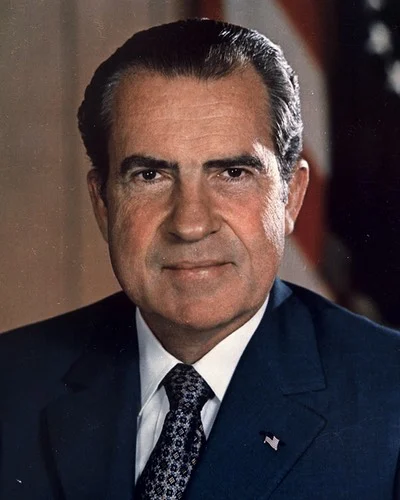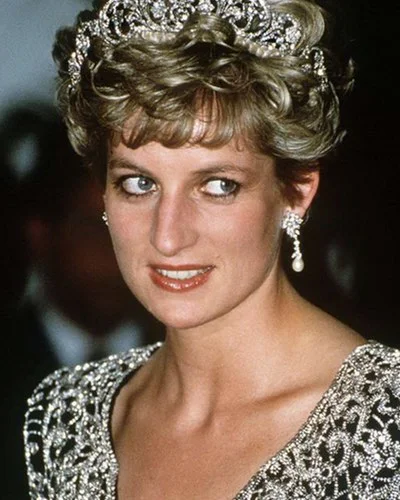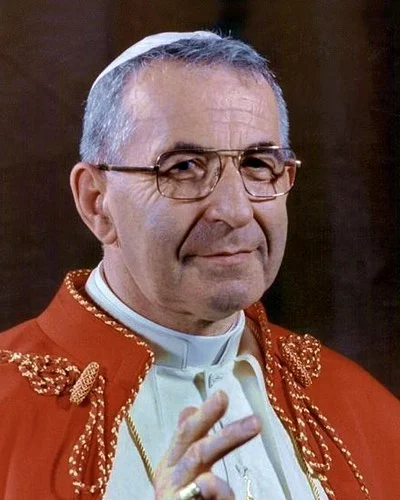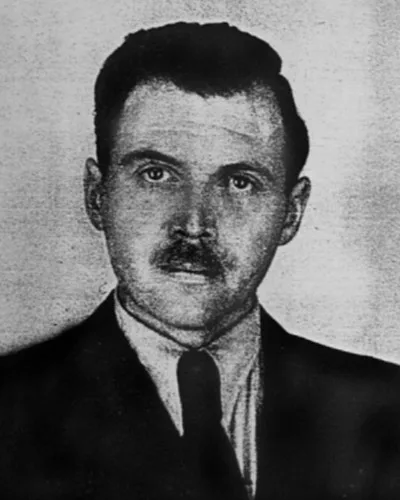From the moment shots rang out at lunchtime on November 22nd 1963, talk of conspiracy has surrounded the assassination of President John F. Kennedy.
A government commission headed by Judge Earl Warren concluded in 1964 that a mysterious ex-marine, Lee Harvey Oswald, committed the assassination alone by firing three shots from the sixth floor of the Texas School Book Depository.
They were unable to put forward any credible motive and much of their evidence was soon discredited by critics.
A second government commission, the HSCA, concluded in 1979 that President Kennedy "was probably assassinated as a result of a conspiracy", but its evidence proved equally controversial and contentious.
Despite the HSCA contradicting Warren's findings, and opinion polls consistently showing the public to be sceptical about its conclusions, the Warren Report's determination that Lee Harvey Oswald acted alone still remains the de facto narrative of the assassination promoted by the mainstream media.
As the events in Dealey Plaza begin to fade out of living memory, the doubts and rival theories about what really happened to Kennedy remain as strong as ever. Was Oswald innocent and the President's murder a conspiracy?
Evidence for
Oswald's whereabouts
Crucial to making the case against Oswald is been able to place him in the sniper’s nest at the time of the shooting, yet the eyewitnesses contradict this.
Arnold Roland saw two men on the sixth-floor just minutes before the assassination. One of the men Roland saw was armed with a high-powered rifle, but his description did not match Oswald.
In order to escape the sixth-floor sniper's nest after the shots, Oswald would have had to run down a staircase past secretaries Victoria Adams and Sandra Style, but neither saw him.
Likewise, caretaker Jack Dougherty was stood on a stairwell that Oswald would have had to run down after the shooting, but Dougherty did not see him.
Policeman Marian Baker claims to have encountered Oswald in a second-floor lunchtime just seventy to ninety seconds after the shots, looking calm and composed. Could he really have gotten there in time?
Oswald’s presence in the lunchroom was in fact consistent with several other witnesses who placed Oswald on the lower floors of the Texas School Book depository when, if the Commission's account was correct, he should have been on the sixth floor preparing his sniper's nest.
The description of the assassin
Several eyewitnesses saw a man at the sixth-floor window before, during and after the assassination, who was generally described as wearing light or khaki coloured clothes.
However, on the day of the assassination, Oswald was wearing a dark red shirt and dark pants, as can clearly be seen in photos of him after his capture.
The single bullet theory
The medical evidence provided the official 'lone gunman' scenario with problems from the beginning.
The Warren Commission concluded that Oswald fired three shots because three shell casings were found in the sniper’s nest on the sixth-floor of the Texas Schoolbook Depository.
Locked into the three shot scenario, this left them struggling to account for all the damage. There were at least three wounds to Kennedy. Governor Connally, sat in a jump seat in front of the President, suffered five separate wounds.
A bystander James Tague was also hit, and there were at least four holes and nicks in the limousine and the kerb.
The commission concluded the first shot missed the limousine altogether and caused the wound to Tague. The third shot caused the fatal head wound and possibly some of the damage to the limousine’s chrome trim.
This left the second shot alone to account for all of the remaining injuries to Kennedy and Connally. Arlen Specter, an ambitious junior counsel to the Warren Commission, devised the now notorious single bullet theory to explain all of these wounds.
Backed into a corner, Spector theorised that the second bullet hit Kennedy in the upper back, passed out through his neck and went on to cause a further five separate wounds to Connally.
Yet everyone present at the autopsy on the night of the assassination was certain the wound in the President’s back was shallow and did not transit the body. They extensively probed the wound to try and find it’s exit and discovered it didn’t even penetrate the chest’s pleura.
The trajectory of this shot didn’t line up either, the Warren Commission made it fit by moving the true location of the back wound and the HSCA and other later attempts to prove the theory simply lied about the position of the two men’s bodies in the limousine.
It got even worse for the single bullet theory when Governor Connally stated in several interviews that he was certain he was not hit by the same shot as Kennedy. His wife Nellie, sat next to him in the car, affirmed this.
The evidence against the single bullet theory continued to stack up ; a shot through Kennedy’s neck would have shattered his spine , which was, in fact, undamaged.
The bullet said to have caused all the damage , Commission Exhibit 399, was allegedly found on a stretcher at Parkland hospital. Yet it was virtually undamaged despite having supposedly shattered Connally’s rib and wrist.
The Warren Commission’s own ballistics test showed it was impossible for the bullet to have done the amount of damaged claimed without becoming substantially deformed.
Dr Joseph Dolce, the senior expert in wound ballistics who performed the tests later said - "The bullet could not have caused so much damage and remained virtually intact; one bullet striking the President’s neck, the Governor’s chest and wrist, should be badly deformed, as our experiments at the Edgewood Arsenal proved."
Despite many attempts to replicate the single bullet shot in tendentious TV specials over the years, nobody has ever come close to convincingly doing so.
There was a timing problem with the Commission’s theory too. The 8mm home movie of the assassination taken by Dallas dressmaker Abraham Zapruder clearly showed the president reacting to a bullet strike before Connally, despite the fact they were meant to have been hit with the same shot.
The Zapruder film presented a further problem to the Commission’s shooting pattern when it showed there was a five-second gap between their supposed second and third shots. However, virtually everyone in Dealey Plaza was certain the last two shots they heard were actually very closely bunched together.
The single bullet theory did not add up, but without it the Warren Commission were unable to demonstrate only three shots were fired and Oswald was the lone assassin.
The Paraffin Test
A simple paraffin test was administered to Oswald’s cheek after his arrest, which tested negative for gunshot residue.
Unhappy with the result, the FBI submitted the cast to a whole array of more advanced tests, including neutron activation analysis, all of which returned negative. This was so problematic for the official case that the FBI simply lied about it at the Warren Commission’s hearings.
This evidence does have some caveats, as the test was not administered until some hours after Oswald’s arrest, but it is still strongly suggestive of his innocence.
Oswald’s involvement with the intelligence services
Oswald’s life is replete with mysteries and inexplicable events. Far from being a disaffected communist sympathizing loner, Oswald continually associated with right-wingers and members of various intelligence agencies, including the FBI and the CIA.
Strange facts surrounding Oswald’s defection to the USSR in 1959, and the way he so easily returned to the USA in 1962, are indicative of his involvement in an intelligence operation, as is his fluency in Russian.
Oswald, who threatened to give away US radar secrets when he defected to Russia, was allowed to freely re-enter America two and a half years later without any consequences at all. The CIA even claimed not to have interviewed him on his return, despite it being standard procedure.
Several investigators have suggested Oswald was a false defector, sent to Soviet Union as part of a CIA intelligence operation. His remarkable fluency in the language, so good several natives mistook Oswald for Russian, certainly suggest official training.
In New Orleans in the summer of 1963, Oswald was seen in the presence of individuals involved in counter-intelligence operations and appeared himself to be involved in agent provocateur activity against the Fair Play For Cuba Committee.
Oswald set up a fake one-man chapter of the FPCC and started handing out pro-Castro leaflets in the high street. On one occasion he was even arrested after getting into a scuffle with anti-Castro protesters.
At the same time, Guy Banister, a local private investigator, was working with the FBI as part of their cointelpro program against the FPCC.
It seems very likely Banister was using Oswald as part of a propaganda operation against the FPCC; the pair were seen together by several witnesses and Oswald’s leaflets were stamped with an address in the same building as Banister’s office.
Once we accept the possibility that Oswald was involved in cointelpro, other mysteries about him take on a new light.
The famous photographs of him holding a pistol and rifle in his backyard, far from fakes, look for all the world like Oswald’s attempt at creating false credentials for himself as an extremist in order to use as leverage to infiltrate the kind of far left wing groups the FBI were targeting with cointelpro.
Mexico City
Shortly before the assassination, Oswald was involved, either knowingly or not, in a complex intelligence operation in Mexico City where he was impersonated on at least one occasion.
Oswald supposedly travelled to Mexico City in late September 1963 to try and obtain a visa to travel back to the Soviet Union. He visited the Cuban and Soviet embassies on multiple occasions and also made several phone calls to the embassies.
However, despite extensive camera surveillance of both buildings, the CIA were unable to provide any photographic evidence of Oswald’s presence at either embassy, claiming the cameras weren’t operating or the photos were destroyed. The HSCA later discovered the CIA had lied about both points.
Photos did later emerge, but none of them showed the real Oswald. Six weeks later, on the night of the assassination, FBI agents questioning the alleged assassin made a startling discovery. They had obtained tapes of Oswald’s calls to the Cuban embassy and the voice on the tape was not him.
"...it appears that there is a second person who was at the Soviet embassy down there."
J. Edgar Hoover
Hoover summed up the situation in a phone called to new President Lyndon Johnson . "We have up here the tape and the photograph of the man who was at the Soviet embassy using Oswald’s name…that picture and the tape do not correspond to this man’s voice, nor to his appearance. In other words, it appears that there is a second person who was at the Soviet embassy down there."
Rumours were also circulating that Oswald, or whoever was impersonating him, had visited a KGB agent at the Soviet Embassy, the obvious implication being that there was Russian involvement in the President's murder.
This was an entirely manufactured rumour, but it served its purpose in concentrating minds in Washington to cover up the true facts of the assassination.
Johnson even used the false possibility of Soviet involvement conjured by Oswald’s visit to Mexico City as a bargaining tool to get people to serve on the Warren Commission.
Oswald silenced
In arguably the most bizarre scene ever broadcast on live television, Lee Harvey Oswald was shot dead on Sunday 24th of November as he was escorted through the basement of the Dallas police department by a phalanx of policemen.
The gunman was a local nightclub owner named Jack Ruby. Despite extensive rumours about Ruby’s links to organised crime, the Warren Commission entirely dismissed any links and concluded Ruby was a lone nut who murdered Oswald because he was upset about Jackie Kennedy’s suffering.
They also dismissed any suggestion he had help gaining access to the Dallas police station basement. 15 years later the HSCA sternly rebuked the Warren Commission over their conclusions about Ruby.
Ruby had, in fact, numerous connections to organised crime. And his association with organised crime figures massively ramped up in the months leading up to Kennedy’s assassination, his out of state phones calls alone peaked at a twenty-five fold increase on normal levels in the weeks before November 22nd.
The HSCA also concluded, contrary to the Warren Commission’s verdict, that Ruby probably had inside help in gaining access to the Dallas Police station basement.
Ruby himself lent credence to conspiracy rumours when he made enigmatic comments in a brief televised news conference in 1965.
"Everything pertaining to what’s happening has never come to the surface. The world will never know the true facts of what occurred, my motives. The people who had so much to gain, and had such an ulterior motive for putting me in the position I’m in, will never let the true facts come above board to the world."
When asked by a reporter - "Are these people in very high positions, Jack?", Ruby responded - "Yes."
Evidence against
Oswald’s behaviour
Oswald immediately fled the Texas School Book depository after the assassination, an action which some have suggested indicates a guilty mind.
Oswald rushed to his rooming house to retrieve a revolver and was later captured in the Texas Theatre after a scuffle with police officers. These actions certainly appear to indicate some kind of guilt on the part of Oswald.
However, as with much of the evidence against Oswald, there are other explanations for his actions. For instance, Oswald may have fled the scene because he realised he had been set up and feared for his life.
The Rifle
The Warren Commission presented much evidence that appeared to show Oswald had ordered the rifle which was linked to the assassination, an old WW2 era Italian Mannlicher Carcano.
Oswald allegedly ordered the rifle from a mail order firm using an alias Alek J. Hidell and much later a partial palm print was found on the weapon which matches the accused assassin.
The evidence appears convincing, but as with all aspects of this case, there are some caveats. There are several curious anomalies in the chain of evidence presented that might have been successfully exploited by Oswald’s defence if the case had ever gone to trial.
The order form for the rifle was posted at a time when Oswald was known to be at work. There are even timesheets to prove it.
He also had the weapon delivered to a PO Box registered under his real name, yet ordered the rifle under a pseudonym. This would have been illegal in 1963 and he should not have been allowed to take delivery of the package.
Despite these problems, the rifle evidence remains perhaps the most convincing part of the official case against Oswald.
Was there a conspiracy to murder President John F. Kennedy in Dealey Plaza in 1963? - add your comment below












